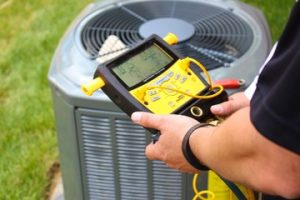Being a homeowner means making tough decisions about where and how to invest in your home. A new air conditioner is a significant investment.

However, a new AC can improve your home’s comfort and save you money on energy costs. How can you tell if your current AC needs to be replaced? For professional help, contact AIR CONDITIONING REPLACEMENT LOVELAND OH.
Summer temperatures are high, and you’re running your AC around the clock. If you find yourself calling for repairs more and more often, it’s time to start considering an air conditioner replacement. Repairs can be costly, and they may not address the underlying issue. Choosing to replace your old system now could save you money and improve comfort for years to come.
The first step in the AC installation process is a thorough inspection and assessment of your home’s current setup. This can take a few hours and will give your HVAC technician a better idea of what kind of unit is best for your space and home layout. The actual air conditioning installation can then take 4-8 hours or more, depending on factors like your square footage and whether you’re adding new ductwork to accommodate the new system.
Unusual noises or odors are another surefire sign it’s time for a new AC unit. These signs could mean internal damage or issues like a faulty blower motor or electrical problem. They might also indicate that your system isn’t dehumidifying properly or circulating clean air. If you’ve noticed an increase in dust and other allergies, a new unit with advanced filtration might help ease these issues.
Capacitors are the brains of your air conditioning system, and they can be susceptible to age-related wear and tear. They can also be damaged by electrical issues or extreme heat exposure. If you’re noticing capacitor issues, they’re likely to get worse over time and lead to system failure or a refrigerant leak. A new capacitor might cost less than a repair and could make your existing system more energy-efficient.
If you’re replacing a simple window or wall unit, the installation should be relatively quick. A ductless mini-split system, on the other hand, requires more complex wiring and connections to your existing HVAC system. You can expect the whole replacement to take a full day or more. It’s important to clear the area for technicians and discuss any upgrades you’re interested in early on so they can be included in the initial installation.
Cost
Repairing an AC unit can be costly. If the cost of repairing it is more than half its total value, replacing it may make financial sense. In this case, a new system will offer increased efficiency and lower energy costs. Also, new systems are often under warranty for the first year or two.
A common rule of thumb used by technicians is the 5000 rule: Multiply the age and cost of your current AC equipment to see whether or not it makes more sense to replace it. For example, if your air conditioning system is older than 15 years and requires frequent repairs, it’s probably time to upgrade.
If you’re considering replacing your AC system, it’s a good idea to have your ductwork inspected at the same time. Leaky or poorly-designed ducts can decrease airflow, making your new system work harder than it should.
Purchasing a new air conditioner is an investment, but it can reduce your energy bills and improve comfort in the long run. A quality installation will increase your peace of mind and help you get the most out of your new equipment. Don’t forget to take advantage of any available rebates, tax credits and financing options that can offset the upfront cost.
Energy Efficiency
Energy efficiency is the ability of a device, building or process to consume less energy and provide the same or better output. It is the most cost-effective way to reduce our dependence on fossil fuels and lower our energy costs, both for individual consumers and society as a whole. It also helps to mitigate climate change and reduce greenhouse gas emissions.
In order to improve energy efficiency, various measures can be taken. These include using more efficient appliances, equipment and technologies; improving the design of buildings and their insulation; adjusting the operation of heating and cooling systems; and limiting electricity consumption. In addition, energy efficiency can be achieved through the use of renewable energies and energy-saving processes.
The most important aspect of energy efficiency is avoiding waste. This can be done through improved design, technology and buildings as well as through the proper maintenance of existing equipment. For example, an air conditioning system that is corroded or has poor coils will only operate at a fraction of its intended efficiency.
By reducing our demand for energy, lowering our household and economy-wide energy costs and mitigating climate change, the benefits of energy efficiency are vast. In order to achieve these goals, governments and international organizations must establish effective policies and programs for promoting the adoption of more efficient technologies. This includes creating incentives to encourage private-sector investment, providing information on efficiency standards and programs, and educating the public about the advantages of more efficient appliances and equipment.
Warranty
While the exact terms vary by manufacturer and installer, most AC units offer a limited parts warranty for up to 10 years or a limited lifetime compressor warranty. Some warranties may require regular servicing by authorised repair providers or come with other restrictions. Most air conditioning installations also include a workmanship warranty to back the quality of installation work done by contractors. While these warranties provide a level of protection, homeowners are typically responsible for covering the cost of labor in the event that repairs are needed. Home warranty plans such as those offered by ARW Home cover these costs and more, allowing homeowners to pay a small service fee for coverage.